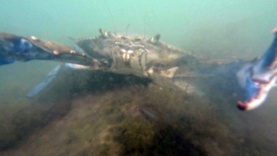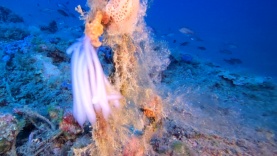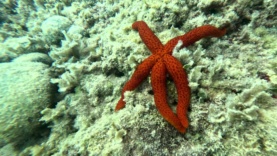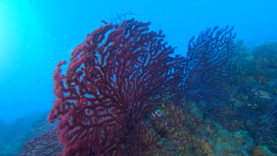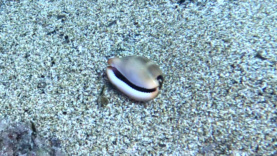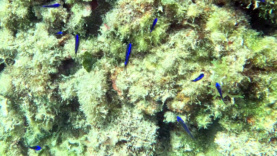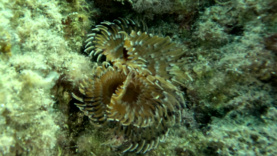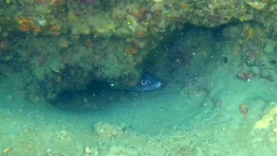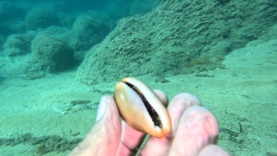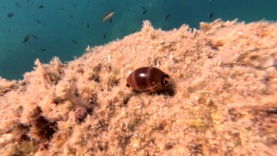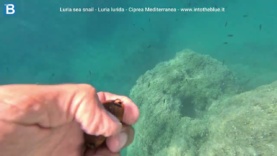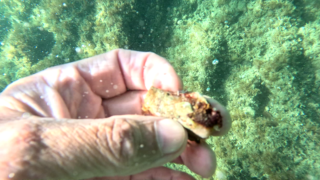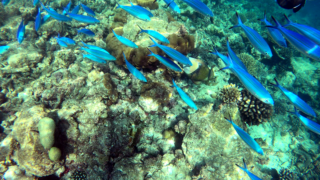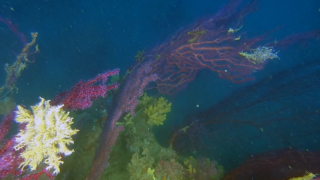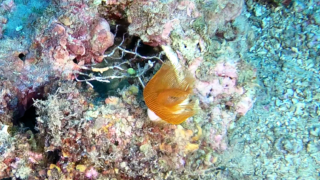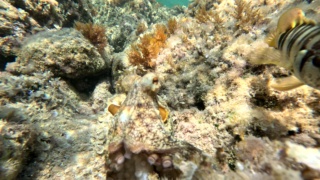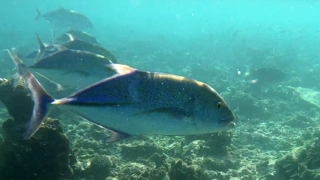Luria sea snail
Meeting Luria lurida is becoming more and more difficult, then finding the shell with the mollusc inside alive is practically a very rare event. In the video we obviously see the Cyprean shell without the animal but given the sheen of the shell this mollusk was probably recently eaten by some predator, probably the usual octopus.
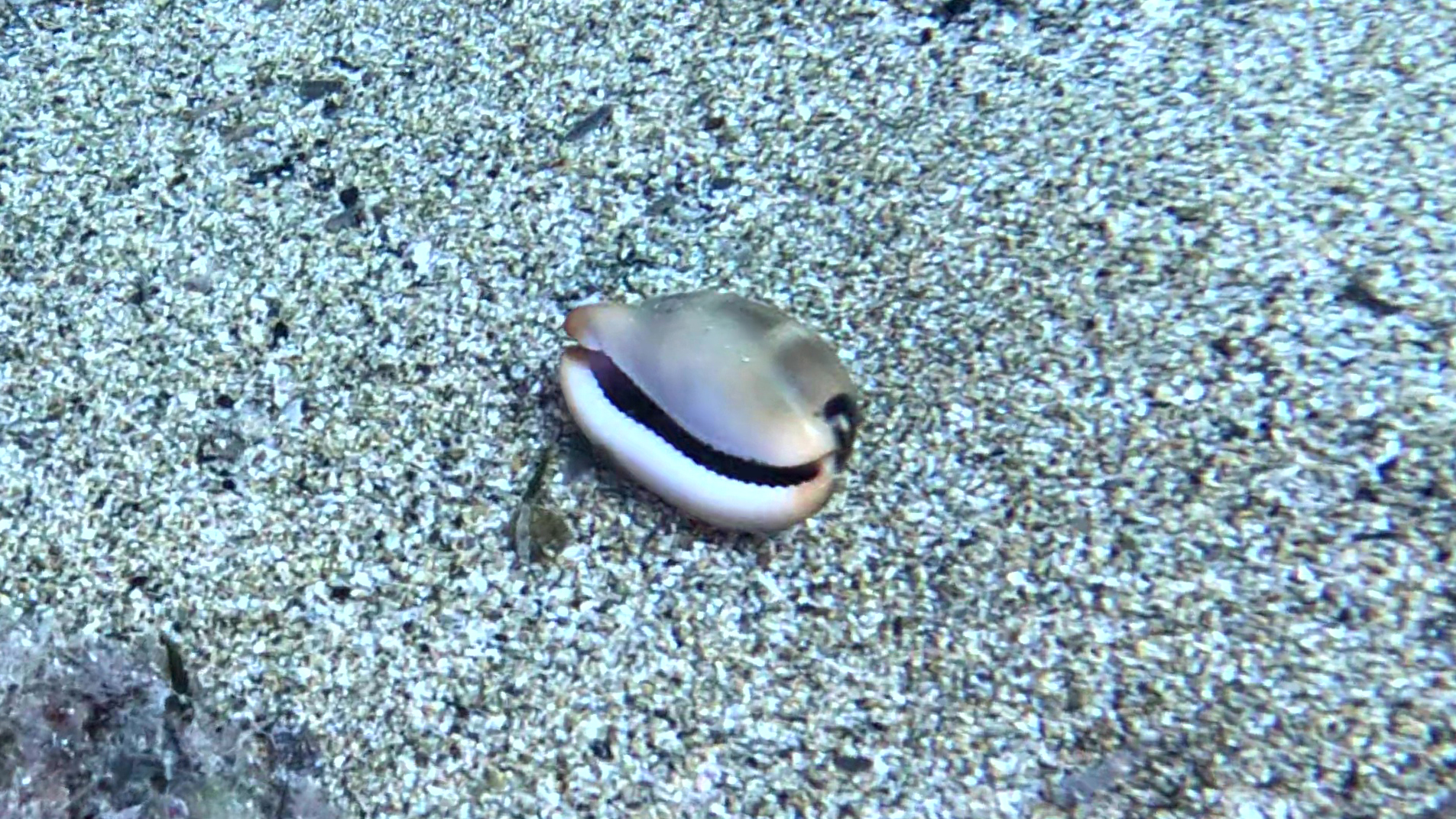
Cypreids (Cypraeidae Rafinesque, 1815) are a family of marine gastropod molluscs of the subclass Caenogastropoda which has about 200 living species, distributed in all the tropical seas of the globe.
Description
A rather evident characteristic of these molluscs is the shell, globular, glossy and porcelain, with a denticulate opening that branches off longitudinally, at the base. The peculiar lucidity of the shell is due to the fact that when the animal is active, this is covered by a thin epithelial layer (mantle) which protects it from encrusting attacks.
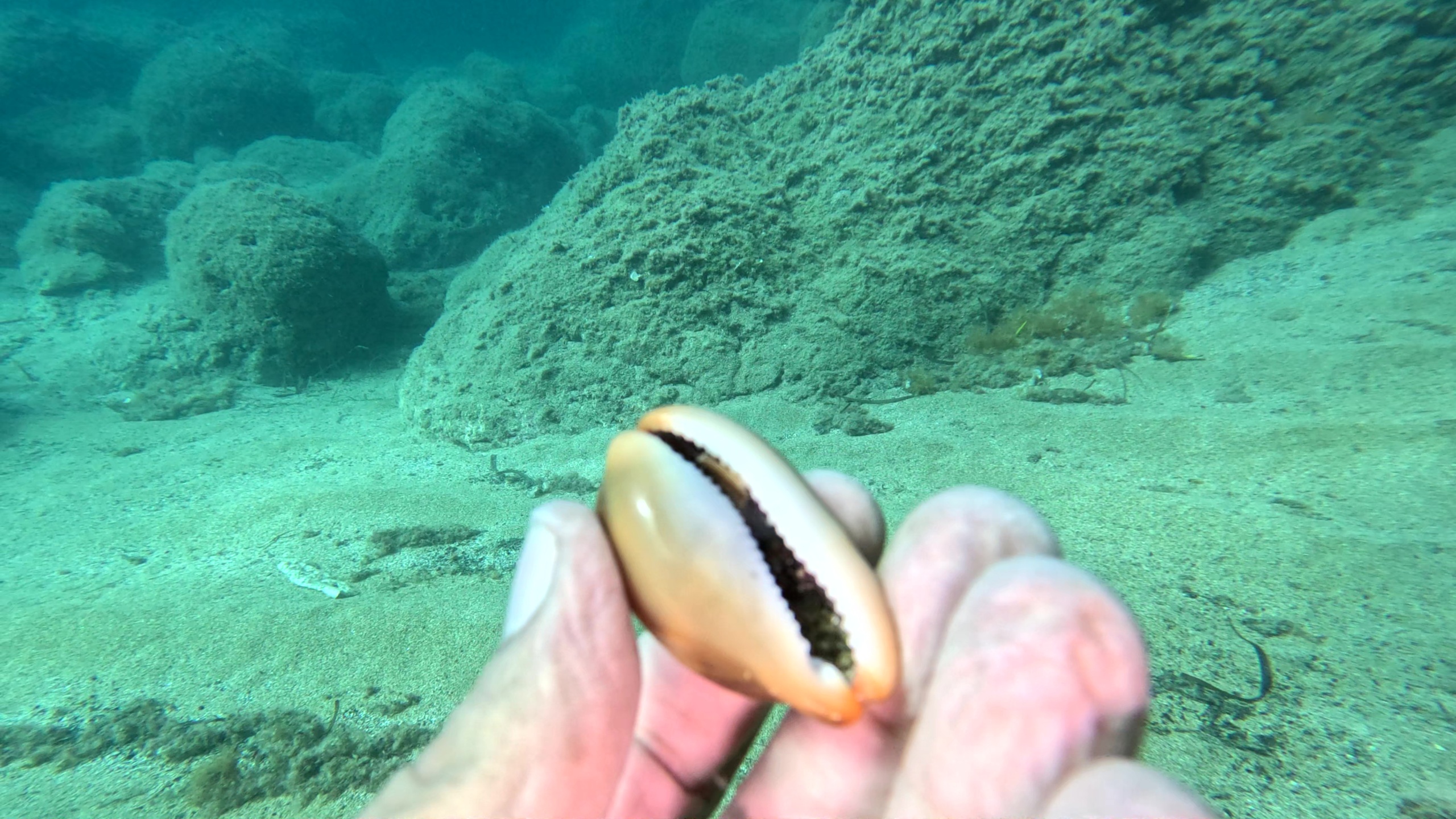
The ample mantle, when completely outward, envelops the shell with its lateral lobes and secretes the carbonate substances which build the shell itself from special glands. In some cases it has a different color of the foot and characteristic ornaments of various kinds (papillae), reduced to simple protuberances or often having showy shapes and bright colours.
Luria lurida (Linnaeus, 1758) is a gastropod mollusk belonging to the Cypraeidae family.
Description
The shell of this cypreid reaches an average length of 4-5 cm, in rare cases even more than 6 cm. The dorsal surface shows uniform colors, from beige to brown-grey, and may have two narrow transversal bands, slightly paler than the ground colour. At the ends of both sides there is a very dark spot, diagnostic of this species, which clearly contrasts with the light color of the dorsal edge. The ventral part of the shell is whitish, flattened more on one side than the other. The mollusc has a uniform reddish brown coat, covered with very small papillae. When the animal is active, the mantle almost entirely covers the dorsal part of the shell.
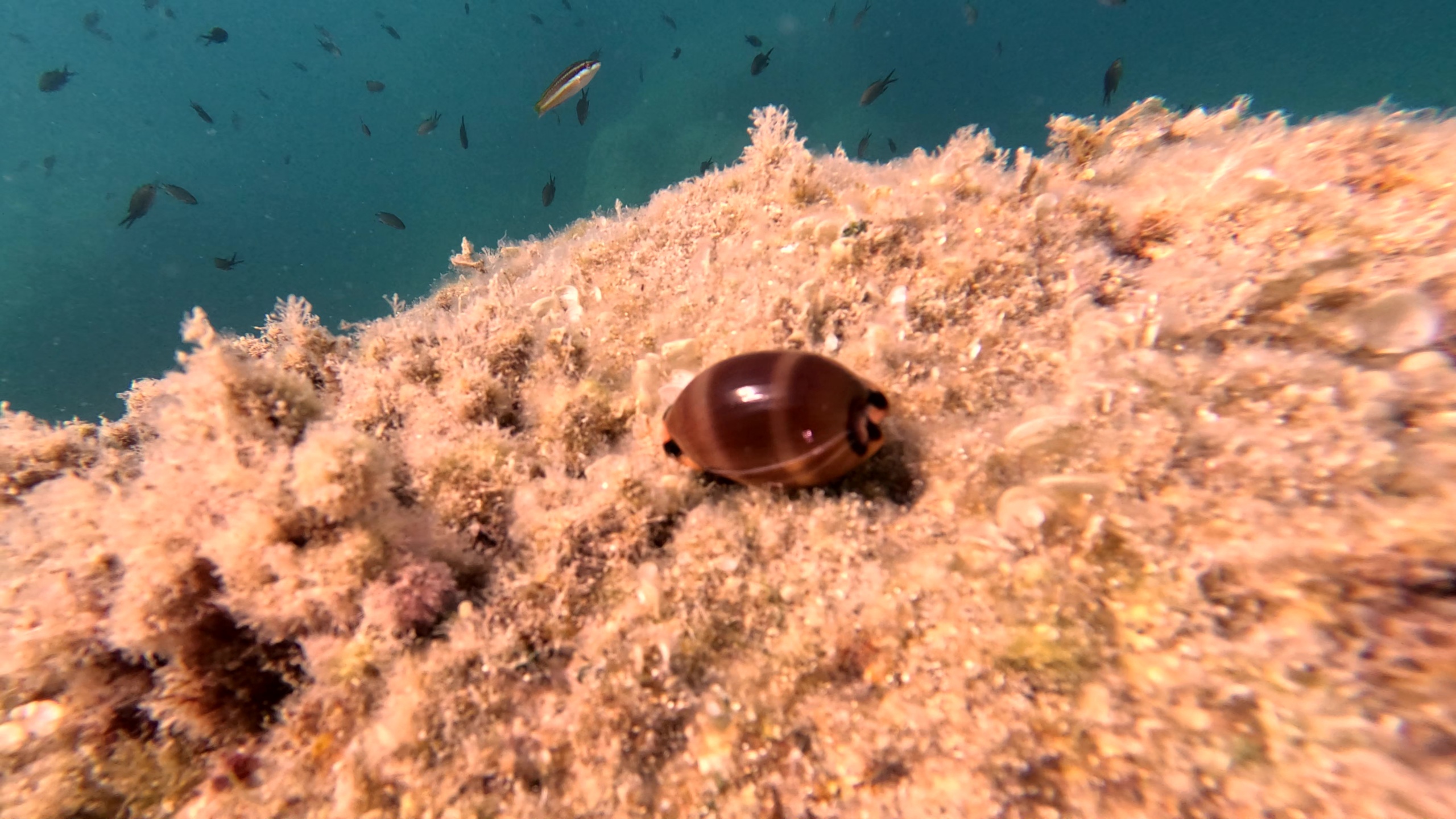
Biology
It is a sciaphilous organism, which during the day tends to remain hidden in caves and ravines or other shaded areas. It feeds on sponges of the genera Aplysina, Chondrilla and Tethya.
Distribution and habitat
This species is found along the African Atlantic coasts, from Morocco to Angola, and in the Canary Islands, the Azores and Cape Verde. It is also present in the Mediterranean Sea. It can be observed on rocky bottoms rich in coralligenous and algae, from a few meters below the surface up to a depth of 40-45 m.
https://it.wikipedia.org/wiki/Cypraeidae
https://it.wikipedia.org/wiki/Luria_lurida
Gallery

